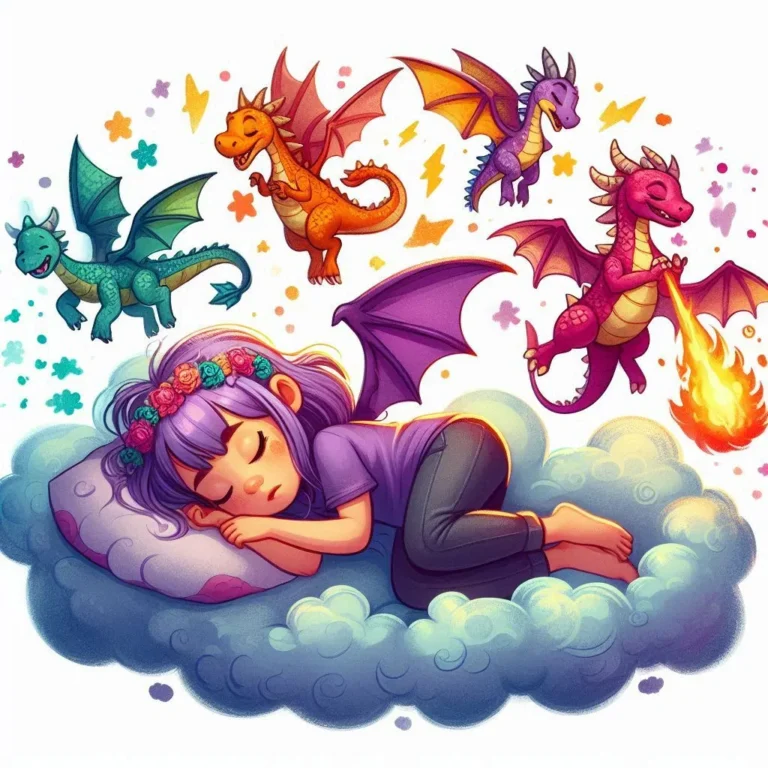Snow in Your Dreams: 6 Interpretations to Help You Chill Out and Reflect
As you stand before Paul Gauguin’s “Dream of Snow,” you can’t help but be drawn into the swirling vortex of emotions on canvas.
The bold brushstrokes and vibrant colors seem to pulse with a sense of melancholy and desperation, as if Gauguin’s own turbulent psyche is spilling out before you. But what secrets lie hidden beneath the dreamlike snowscape’s surface?
What demons was Gauguin trying to exorcise through this work? The more you gaze upon it, the more questions arise – and the more you’re compelled to unravel the mysteries that lie within.
Dream of Snow In a Nutshell
- ‘Dream of Snow’ reflects Paul Gauguin’s emotional turmoil, with swirling clouds of blue and white hues evoking melancholy and desperation.
- The dreamlike quality of the painting blurs reality and fantasy, echoing Gauguin’s feelings of disconnection and disillusionment.
- The artwork captures the essence of snow, conveying its delicate beauty, fleeting nature, and power to transform the world.
- Bold, expressive brushstrokes and vibrant colors create a sense of depth, drawing the viewer in with a palpable sense of longing.

Unraveling the Artist’s Emotional Turmoil
As you plunge into the dreamlike quality of ‘Dream of Snow,’ it becomes apparent that the artist’s emotional turmoil is woven into the very fabric of the piece, with each brushstroke and color choice serving as a visceral expression of their inner struggle.
This introspective artwork is a declaration to the artist’s unwavering commitment to Artistic Expression, where the canvas becomes a mirror reflecting their deepest emotions. The swirling clouds of blue and white hues evoke a sense of melancholy, while the bold, expressive strokes convey a sense of urgency and desperation.
Through ‘Dream of Snow,’ the artist achieves Creative Catharsis, exorcising their demons and channeling their emotional pain into a work of beauty.
The dreamlike quality of the piece isn’t just a stylistic choice, but a reflection of the artist’s inner world, where reality and fantasy blur. As you immerse yourself in this artwork, you’re invited to bear witness to the artist’s most intimate struggles, and in doing so, you’re reminded of the transformative power of art to heal and liberate.

A Window Into Gauguin’s Psyche
Through the dreamlike veil of ‘Dream of Snow’, you gaze into the turbulent psyche of Paul Gauguin, where the boundaries between reality and fantasy dissolve, and the artist’s innermost thoughts and emotions materialize as vivid, expressive brushstrokes.
In this domain, Gauguin’s artistic expression becomes a vessel for creative catharsis, a means to exorcise the demons that haunt him. His bold, expressive strokes and vibrant colors serve as a window into his inner world, revealing the turmoil and angst that fuel his creative process.
As you explore further into the painting, you begin to sense the artist’s struggle to reconcile his inner self with the external world. The dreamlike quality of the snowscape serves as a metaphor for the blurred lines between reality and fantasy, echoing Gauguin’s own feelings of disconnection and disillusionment.
Through ‘Dream of Snow’, Gauguin invites you to bear witness to his inner turmoil, to partake in his creative catharsis, and to experience the liberation that comes with surrendering to the artistic process.
The Enigmatic Beauty of Snow
You find yourself drawn to the enigmatic beauty of snow in ‘Dream of Snow‘, where Gauguin’s bold brushstrokes and vivid colors conjure an otherworldly landscape that seems to pulse with an inner light, as if the very essence of winter has been distilled onto the canvas.
The frosty landscapes, imbued with an ethereal quality, evoke a sense of winter solace, transporting you to a domain where the cares of the world seem to fade away.
Gauguin’s masterful use of color and composition creates a dreamlike atmosphere, where the boundaries between reality and fantasy blur.
As you gaze upon the canvas, you’re struck by the way the artist has captured the essence of snow – its delicate beauty, its fleeting nature, and its power to transform the world around us.
The painting is an invitation to step into a world of quiet contemplation, where the simplicity and serenity of snow-covered landscapes offer a respite from the chaos of everyday life.

Brushstrokes of Melancholy and Hope
In Gauguin’s ‘Dream of Snow‘, the bold, expressive brushstrokes that define the painting’s wintry landscape also betray a deeper emotional resonance, as if the artist’s own melancholy and hopes had been woven into the very fabric of the snow itself.
You, the viewer, are invited to step into this frosty world, where the Winter Blues seem to seep from the canvas. Gauguin’s masterful strokes evoke a sense of nostalgia, as if the snowflakes are whispering Frosty Memories of joy and sorrow, of love and loss.
The artist’s use of color and texture creates a sense of depth, drawing you in with an almost palpable sense of longing. And yet, amidst the melancholy, there’s a glimmer of hope – a sense that even in the darkest of winters, the beauty of the snow can bring solace and renewal.
As you gaze upon this masterpiece, you can’t help but reflect on your own experiences, your own Winter Blues, and the Frosty Memories that shape your perspective. In ‘Dream of Snow’, Gauguin offers a poignant reminder that even in the bleakest of landscapes, there’s always a glimmer of hope to be found.
Escapism Through Vibrant Colors
As Gauguin’s palette bursts forth with vibrant hues, his snowy landscape transforms into a kaleidoscope of emotional release, beckoning you to surrender to the escapist allure of color.
In this chromatic domain, you’re free to explore the depths of your psyche, where color therapy awaits to soothe your soul.
Gauguin’s bold brushstrokes evoke a mood palette that’s both melancholic and hopeful, a symphony of emotions that resonates with your inner world.
As you immerse yourself in this vibrant landscape, you begin to unravel the complexities of your emotions, surrendering to the therapeutic power of color.
The icy blues and whites evoke a sense of calm, while the bursts of orange and yellow ignite a spark of optimism.
You start to realize that Gauguin’s palette isn’t just a reflection of his own emotional state, but a tool for you to tap into your own.
The colors become a gateway to self-discovery, a means to transcend the mundane and enter a sphere of emotional freedom.
Deciphering the Symbolism of Snow
Gauguin’s snowy landscape, having yielded its emotional resonance, now invites closer examination of the symbolism underlying its wintry veil, where the innocent purity of snow conceals a complex tapestry of meanings.
As you plunge deeper, you’ll uncover cultural associations that reveal snow’s multifaceted nature. In many Eastern cultures, snow represents purity, innocence, and spiritual growth, while in Western societies, it’s often linked to winter’s bleakness and isolation.
However, snow can also be seen as a seasonal metaphor for transformation and renewal. The cyclical nature of snowfall and thawing mirrors life’s cycles of growth, decay, and rebirth.
You may find yourself reflecting on your own personal journey, where snow’s ephemeral beauty symbolizes the impermanence of life’s experiences. As you navigate the symbolic landscape, you’ll begin to unpack the nuances of snow’s meaning, revealing a rich tapestry of associations that speak to the human experience.
Frequently Asked Questions
Is “Dream of Snow” a Reflection of Gauguin’s Childhood Experiences?
You ponder whether an artist’s work reflects their formative years; in Gauguin’s case, his French upbringing likely influenced his Tropical escapism, but does it explicitly shape “Dream of Snow”?
What Inspired Gauguin to Use Bold, Vibrant Colors in This Piece?
As you plunge into Gauguin’s oeuvre, you’ll find that his bold, vibrant colors stem from his fascination with color theory, which granted him artistic freedom to break conventions and release a kaleidoscope of emotions on canvas.
Is the Snow in the Painting a Symbol of Purity or Innocence?
As you ponder the symbolic significance of snow, consider: does it evoke a winter wonderland, representing innocence and purity, or is it a more complex metaphor? You’ll find Gauguin’s use of snow in “Dream of Snow” to be an intriguing, nuanced portrayal of innocent beauty.
Did Gauguin Intend to Evoke a Sense of Melancholy in the Viewer?
As you ponder Gauguin’s work, you wonder if he aimed to evoke melancholy in you; his artistic intent, after all, is to create emotional resonance, and his use of muted colors and solemn expressions hints at a deliberate attempt to stir somber feelings within.
Was “Dream of Snow” Part of a Larger Collection or Solo Exhibition?
When exploring an artwork’s significance, you consider its artistic context and exhibition history, asking if it was a standalone piece or part of a larger collection, which can greatly impact its intended meaning and audience reception.

Hi, I’m Aurelia Starfrost, your spiritual guide at InsightfulSpiritual.com. I love exploring ancient wisdom and modern practices to help you on your journey. With a focus on meditation and energy healing, I’m here to guide you to find solace within and discover your spiritual essence.







